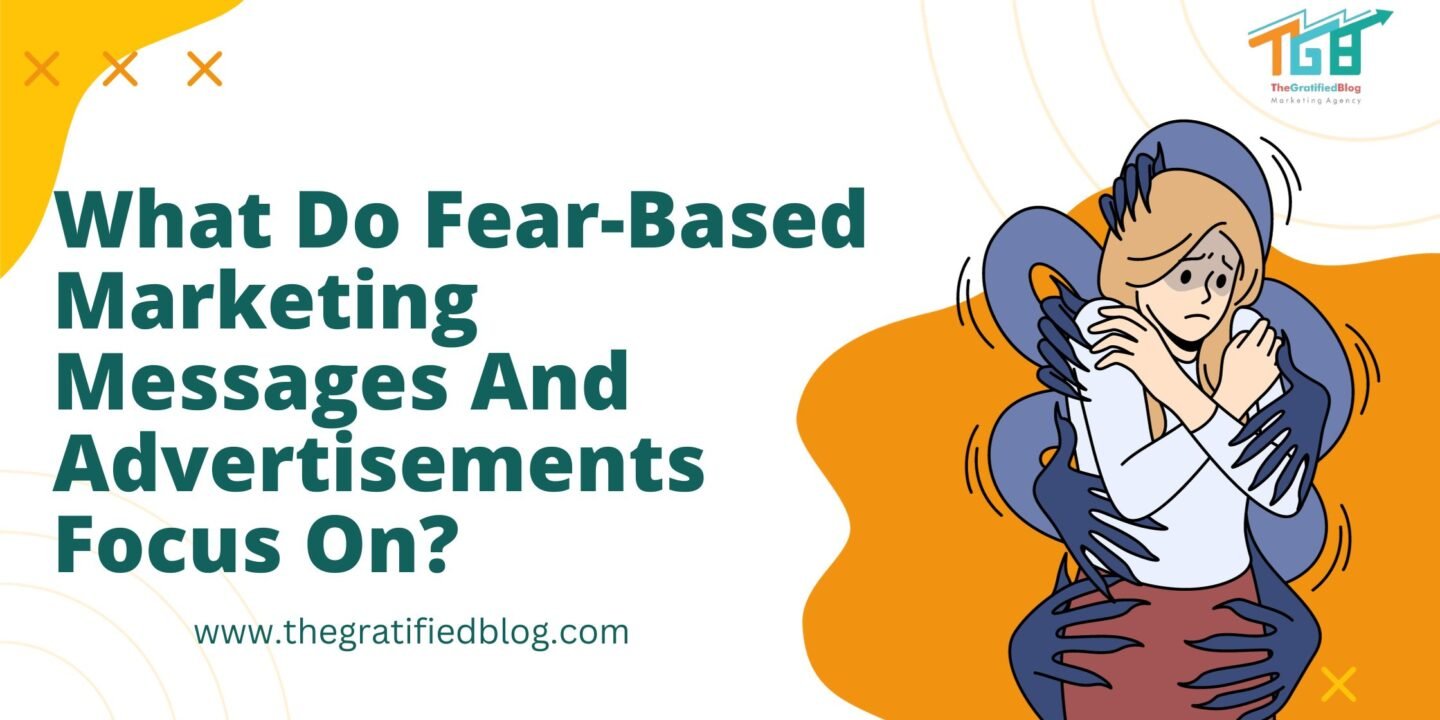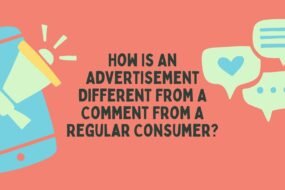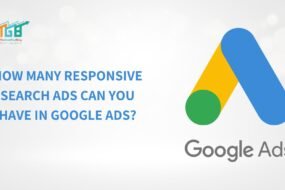
In the world of advertising and marketing, capturing the attention of consumers is a fundamental goal. Companies invest heavily in understanding human psychology and behavior to create messages that resonate with their target audience. One such approach that has gained popularity over the years is fear-based marketing. But what do fear-based marketing messages and advertisements focus on, and how do they impact consumers? This blog post will explore what fear-based marketing messages and advertisements focus on. And the tactics and psychology behind fear-based marketing and its implications in today’s advertising landscape.
What Is Fear-Based Marketing?
Fear-based marketing is a marketing strategy that aims to evoke feelings of fear, anxiety, or unease in consumers to persuade them to take a specific action or purchase. This approach relies on tapping into deep-seated emotions and concerns, such as personal safety, health, or financial security, with the belief that by highlighting potential threats or dangers, consumers will be more inclined to take steps to avoid those risks.
Fear-based marketing often uses fear appeals and emotional manipulation to drive consumer behavior, and it can focus on various themes, including health-related fears, financial insecurity, safety and security, and more. Although it has the potential to be impactful in achieving short-term goals and results, it also raises ethical concerns about the potential manipulation of emotions and the responsibility of advertisers to provide accurate and balanced information.
What Do Fear-Based Marketing Messages And Advertisements Focus On?
Fear-based ads mainly focus on the adverse outcomes individuals may experience if they choose not to purchase the product.
Fear-based marketing messages and advertisements often revolve around specific common themes. Understanding these themes can shed light on what marketers are trying to focus on when using this strategy.
Health-Related Fears
Health-related fears are a frequent target in fear-based marketing. Advertisers may highlight the dangers of specific diseases or health conditions, emphasizing the need to buy their products for protection. This is often seen in pharmaceutical advertisements, where the fear of illness is coupled with the promise of a cure.
Financial Insecurity
Many financial institutions and insurance companies use fear-based marketing to draw attention to individuals’ and families’ potential financial risks. Retirement planning, life insurance, and investment services often employ this tactic to stress the importance of safeguarding one’s financial future.
Safety And Security
Personal safety is a universal concern, and fear-based marketing often capitalizes on this fear. Home security systems, car safety features, and personal safety products regularly highlight the potential dangers individuals may encounter without their products. That makes consumers believe that purchasing these products is essential to their well-being.
Social Acceptance
Some ads suggest that not using a particular product or service could lead to social isolation or disapproval. That can be seen in hygiene products, fashion, or beauty standards ads.
Shock Value
Shocking or disturbing imagery and storytelling may be used to provoke a strong emotional reaction. This can be particularly effective in raising awareness for specific issues, such as public safety campaigns or health initiatives.
The Psychology Behind Fear-Based Marketing
Understanding the psychology behind fear-based marketing is crucial to grasping what these messages focus on. Advertisers employ several psychological principles to make this strategy effective.
- Fear Appeals: Fear appeals are central to fear-based marketing. These appeals trigger an emotional response that motivates consumers to take action. The fear of loss or harm prompts individuals to consider purchasing a product or service as a protective measure.
- Perceived Vulnerability: Fear-based marketing often targets the perception of vulnerability. By suggesting that the consumer is at risk without the promoted product, advertisers tap into an individual’s innate desire for safety and security. That plays on the “better safe than sorry” mentality.
- The Efficacy of the Solution: Fear-based advertisements also highlight the efficacy of the marketed product or service. They present it as the ultimate solution to the portrayed problem or threat. This assurance of safety or protection is a powerful motivator.
- Loss Aversion: Behavioral economics research shows that people are more Often driven by the fear of losing something they possess than by the anticipation of gaining something new. Fear-based marketing often plays on this principle, suggesting that not buying the product could lead to a significant loss.
- Need for Security: Fear-based marketing taps into the basic human need for security and safety. It suggests that the promoted product will provide protection or a solution to a potential threat, thus fulfilling this need.
- Cognitive Dissonance: Fear-based advertising can create a sense of cognitive dissonance, where individuals experience discomfort due to a perceived inconsistency between their current beliefs or behaviors and the fear-inducing message. Purchasing the product is presented as a way to reduce this discomfort.
- Information Processing: Fear-based ads often aim to disrupt habitual thinking and trigger a more conscious, analytical information processing mode. That can make people pay closer attention to the message and solution.
Creating A Fear-Based Marketing Campaign
Creating a fear-based marketing campaign involves strategically designing an advertising campaign that leverages fear or anxiety as a central emotional appeal to motivate consumers to take a particular action or purchase. To create an effective fear-based marketing campaign, follow these steps:
- Define Your Target Audience: Comprehend your target audience’s demographics, needs, fears, and motivations. Segment your audience to tailor your message for specific groups, ensuring a more personalized approach.
- Define Your Campaign Goals: Specify the precise objectives of your campaign, whether it’s increasing sales, raising awareness, or promoting a particular behavior. Establish clear, measurable goals to assess the campaign’s success and impact effectively.
- Choose a Fear-Inducing Topic: Select a topic or issue that genuinely resonates with your target audience, evoking fear or concern. Ensure the chosen topic is relevant to your product or service, fostering a connection between the campaign and its intended audience.
- Craft a Compelling Narrative: Develop a captivating story or message that captures the audience’s attention and forges an emotional bond. Center the narrative around the fear-inducing topic, positioning your product or service as a viable solution or means of protection.
- Select Visuals and Imagery: Opt for visuals that effectively convey the fear or anxiety of the chosen topic. Utilize images, videos, or graphics that align with the emotions you aim to evoke, reinforcing the overall impact of your campaign.
- Highlight Consequences of Inaction: Clearly articulate the adverse outcomes or consequences of not addressing the fear-inducing issue. Emphasize how your product or service can mitigate or eliminate these consequences, reinforcing the urgency for action.
- Offer a Solution: Present your product or service as the definitive solution to the problem, alleviating the fear or concern expressed by your audience. Spotlight the benefits and features that directly address the issue, establishing your offering as a source of security and relief.
- Create a Strong Call to Action (CTA): Encourage immediate action by crafting a compelling and urgent call to action. Communicate the steps your audience should take, such as purchasing or signing up for a service, amplifying the campaign’s impact.
- Test and Optimize: Conduct pilot campaigns or A/B tests to evaluate the effectiveness of your messaging, visuals, and call to action. Utilize data and feedback to refine and optimize your campaign, ensuring continuous improvement for better results.
- Comply with Ethical Guidelines: Ensure the campaign adheres to ethical standards, avoiding misleading or exploitative tactics. Maintain transparency about the benefits and limitations of your product, fostering trust with your audience.
- Leverage Multiple Marketing Channels: To reach a broader audience, distribute your campaign across various marketing channels, including social media, email, television, or print advertising. Employing diverse channels enhances the campaign’s visibility and impact.
- Measure and Analyze Results: Continuously monitor the campaign’s performance against defined goals and metrics. Analyze consumer responses, conversion rates, and overall impact to gauge the success and effectiveness of your campaign.
- Adjust and Adapt: Based on performance and feedback, make necessary adjustments to enhance effectiveness. Consider evolving the campaign or exploring alternative marketing strategies to ensure continued relevance and success.
Examples Of Fear-Based Marketing
Fear-based marketing is a strategy that instills fear or anxiety in consumers to motivate them to take a specific action or purchase. Here are some examples of fear-based marketing campaigns:
- Anti-Smoking Campaigns: Numerous public health campaigns have used fear-based marketing to discourage smoking. They often feature graphic images of diseased organs, damaged lungs, or people suffering from smoking-related illnesses to evoke fear and discourage tobacco use.
- Insurance Ads: Insurance companies sometimes use fear-based marketing to emphasize the potential risks of inadequate coverage. For example, they might depict scenarios of accidents, health crises, or property damage to make people feel vulnerable and prompt them to purchase insurance.
- Home Security Systems: Companies selling home security systems often use fear-based ads by portraying scenarios of break-ins, intruders, or security breaches. These ads aim to create a sense of fear and vulnerability, encouraging homeowners to invest in their products and services for protection.
- Health and Wellness Products: Some advertisements for dietary supplements, fitness products, or wellness services use fear-based marketing by highlighting health problems or issues that may arise without their solutions. These ads suggest that not using their products could lead to undesirable health outcomes.
- Pest Control Services: Pest control companies use fear-based marketing by depicting the negative consequences of pest infestations. To promote their services, these ads play on people’s fears of health risks, property damage, or discomfort caused by pests.
- Dental Care Products: Ads for toothpaste, mouthwash, and dental care products often focus on the fear of bad breath, gum disease, cavities, or teeth discoloration. They suggest that using their products can prevent these undesirable outcomes.
FAQs
Q1. What Are Fear-Based Messages?
Fear-based messages are a type of communication that evokes fear, anxiety, or concern in the audience. These messages are designed to provoke a strong emotional response, often to motivate individuals to take a specific action or make a particular decision. Fear-based messages highlight potential risks, negative consequences, or threats associated with not following the recommended action.
Q2. When Might A Fear Message In Advertising Work?
A fear message in advertising might work when it effectively resonates with the target audience’s genuine concerns and when the perceived threat can be alleviated or mitigated by promoting the product or service.
Q3. Does Fear-Based Advertising Work?
Fear-based advertising can effectively capture the audience’s attention and motivate action. Still, its success depends on several factors, including the nature of the fear appeal, the target audience, and ethical considerations. Fear-based advertising can be persuasive when used responsibly and aligned with the audience’s genuine concerns.
Conclusion
Fear-based marketing messages and advertisements focus on leveraging the power of fear and anxiety to influence consumer behavior. By tapping into our emotions and highlighting potential risks, these campaigns aim to prompt action or purchases. However, using such tactics ethically and responsibly is crucial, ensuring they genuinely address consumers’ concerns while respecting their emotions.
We hope you find the correct answer to the question, “What do fear-based marketing messages and advertisements focus on?” Your insights and feedback on this topic are welcome in the comments section below as we continue to explore the dynamics of fear in advertising and its influence on consumers.








No Comments